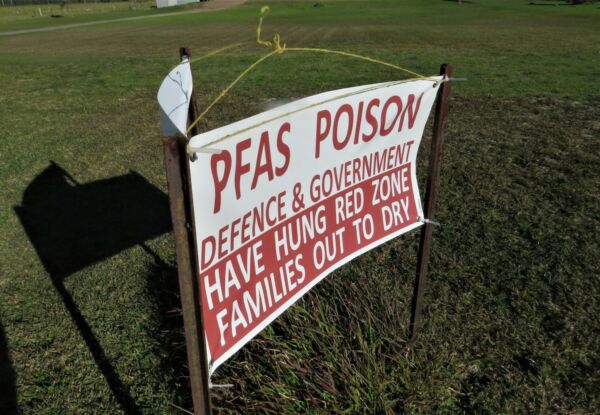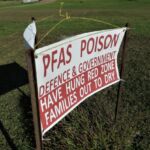Story Info
Story Info

Glenn Albrecht
Williamtown, New South Wales, Australia
2018
Type of Wounded Place
Story & Experience
This year I went to a “chemical” contaminated site about 40 minutes from my home. The contamination problem is caused by what are called PFAS or Per- and poly-fluoroalkyl substances. These chemicals have been used in fire-fighting foam for decades and have leaked from the Department of Defence Airport at Williamtown and into the ground water under many properties. There is no certainty that these chemicals are safe for human exposure and residents have elevated levels of PFAS in their blood samples. Because of the PFAS contamination, the properties affected have been quarantined and their owners have been advised not to consume food from their own mainly rural properties (including eggs). Property values have been effectively taken to zero as nobody would willingly buy into a declared chemical contamination zone. The residents are trapped within their own properties for many decades to come. To make terrible matters worse, affected residents have serious worries about severe health impacts connected to these chemicals. Since the declaration of contamination in 2015, residents and journalists have discovered over 50 cases of cancer all located in the ‘Red Zone’ of contamination over a 15-year period. While health authorities have denied that there is a cancer cluster in the area, the uncertainty about the carcinogenic status of PFAS chemicals remains a constant worry for the affected people. The worry about health impacts, property value impacts and loss of a sense of place (home) have all delivered a massive case of solastalgia for these people. Their lived experience of negative environmental change is an ongoing nightmare. Unlike most forms of environmental desolation, this case study is unusual in that the impact is invisible. I spent time with two affected people on their contaminated property … no damage visible, a beautiful and tidy lawn and garden. No garbage to make a symbolic ‘bird’. All I could do was use the gold wool to wrap the protest signs in front of their properties and show to the world that these people and their desolated places are connected by threads of care and compassion to other people all over the world.
This year I went to a “chemical” contaminated site about 40 minutes from my home. The contamination problem is caused by what are called PFAS or Per- and poly-fluoroalkyl substances. These chemicals have been used in fire-fighting foam for decades and have leaked from the Department of Defence Airport at Williamtown and into the ground water under many properties. There is no certainty that these chemicals are safe for human exposure and residents have elevated levels of PFAS in their blood samples. Because of the PFAS contamination, the properties affected have been quarantined and their owners have been advised not to consume food from their own mainly rural properties (including eggs). Property values have been effectively taken to zero as nobody would willingly buy into a declared chemical contamination zone. The residents are trapped within their own properties for many decades to come. To make terrible matters worse, affected residents have serious worries about severe health impacts connected to these chemicals. Since the declaration of contamination in 2015, residents and journalists have discovered over 50 cases of cancer all located in the ‘Red Zone’ of contamination over a 15-year period. While health authorities have denied that there is a cancer cluster in the area, the uncertainty about the carcinogenic status of PFAS chemicals remains a constant worry for the affected people. The worry about health impacts, property value impacts and loss of a sense of place (home) have all delivered a massive case of solastalgia for these people. Their lived experience of negative environmental change is an ongoing nightmare. Unlike most forms of environmental desolation, this case study is unusual in that the impact is invisible. I spent time with two affected people on their contaminated property … no damage visible, a beautiful and tidy lawn and garden. No garbage to make a symbolic ‘bird’. All I could do was use the gold wool to wrap the protest signs in front of their properties and show to the world that these people and their desolated places are connected by threads of care and compassion to other people all over the world.
Williamtown, New South Wales, Australia
RECENT STORIES
For the Gulf Coast
Our beaches are being bombarded almost daily since the end of the first week of the sinking of the Deep Water Horizon with gatherings of people or all stripes: protests, prayer groups, volunteers, rallies for [...]
Remembrance Day for Lost Species in Helsinki 2023
On November 30th, there was first a session organized by the Finnish social and health sector project about eco-anxiety and eco-emotions (www.ymparistoahdistus.fi). This “morning coffee roundtable”, a hybrid event, focused this time on ecological grief [...]
Ashdown Forest
Ashdown Forest is an area of natural beauty in West Sussex, England. It is also one of the very few remaining areas of extensive lowland heath left in Europe. This rare and threatened landscape is [...]



